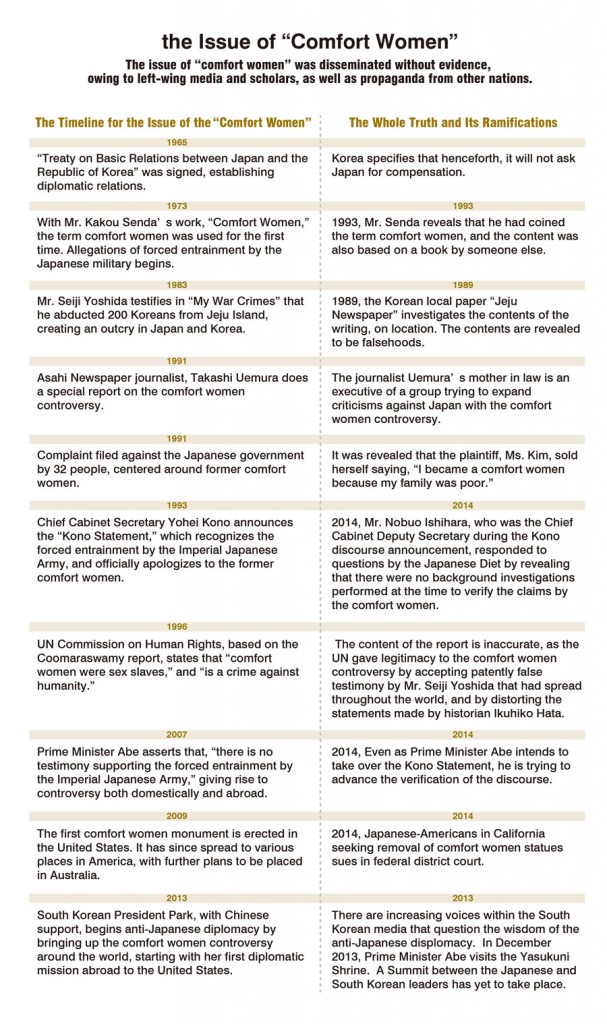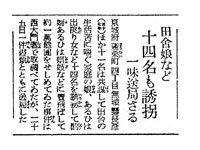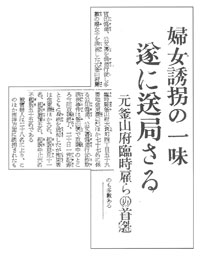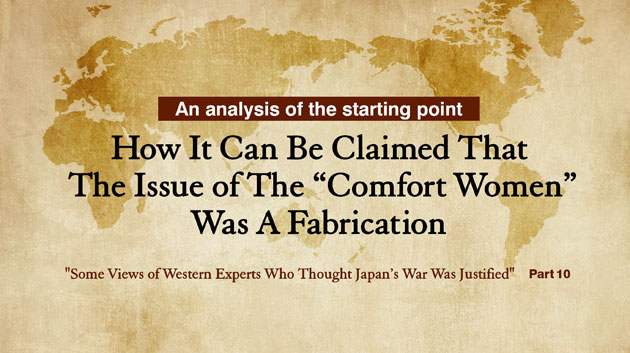How It Can Be Claimed That The Issue Of The “Comfort Women” Was A Fabrication
"Some Views of Western Experts Who Thought Japan's War Was Justified" (Part 10)
The issue of “comfort women” was disseminated without evidence, owing to left-wing media and scholars, as well as propaganda from other nations.

The Timeline for the Issue of the “Comfort Women” / The Whole Truth and Its Ramifications

(image above) An unscrupulous Korean businessman was arrested for abducting women living in poor rural areas and selling them off.
[Asahi Newspaper] (Seisenban) 1940 June 28th

(image left) A Korean kidnapping group was taken into custody for questioning on suspicion of creating false visas and selling women off to southeast Asia.
[Asahi Newspaper] (Nansenban) 1939 November 21st
The “comfort women” controversy started around 1973, and by the 90’s it had grown to become a diplomatic issue between Japan and Korea (right graph). In 1993, the Japanese government admitted, for political expediency and without investigation or evidence, the forced entrainment by the Imperial Japanese Army and announced the “Kono Statement”, hoping to end the controversy. But the Korean side came to abuse it for their own political purposes.
However, the allegation of forced entrainment of “comfort women” is a groundless forgery, and the women were comfort women (prostitutes) recruited by private traders, which in fact occurs in every country.
There Is No Evidence of Forced Entrainment by the Imperial Japanese Army
Furthermore, there has been no evidence that the Imperial Japanese Army had forced entrainment of comfort women. This is also apparent from the statement that former Chief Cabinet Deputy Secretary Nobuo Ishihara, who was involved in the making of the Kono Statement, made, saying, “I even went to the Library of Congress in the United States but I couldn’t find any supporting data” The Kono Discourse was a sloppy piece of work that was released without conclusive evidence of forced entrainment.
The Japanese Army Protected Comfort Women
In fact, the Japanese Army protected comfort women just as it did ordinary civilians. In January 1944, on Rabaul in Papua New Guinea, there were 100 thousand Japanese soldiers and about 100 comfort women. As American troops approached the island, the Japanese army put the women, including comfort women, on a transport ship to Japan for evacuation. However, the transport ship was attacked by a submarine and was sunk. The Japanese Army built a dwelling for the 2 comfort women and 1 civilian woman that remained, and even had a guard so that they wouldn’t be abused by soldiers. Also, on Semarang Island in Indonesia, there was a Dutch comfort woman. However, when it became clear that she was forced to work as a comfort woman against her will, the military closed the comfort station.
The wages of the comfort women were quite high. A Korean woman who worked as a comfort woman in Burma for 2 years was able to save enough money to purchase 5 houses. This is also noted by Mr. Marano who mentioned the investigation by the American military that reported that the wages of the comfort women were high.
As these episodes reveal, the basic human rights of the comfort women were protected, and still more their wages were quite high, and very much different from the “sex slave” image that many have.



















